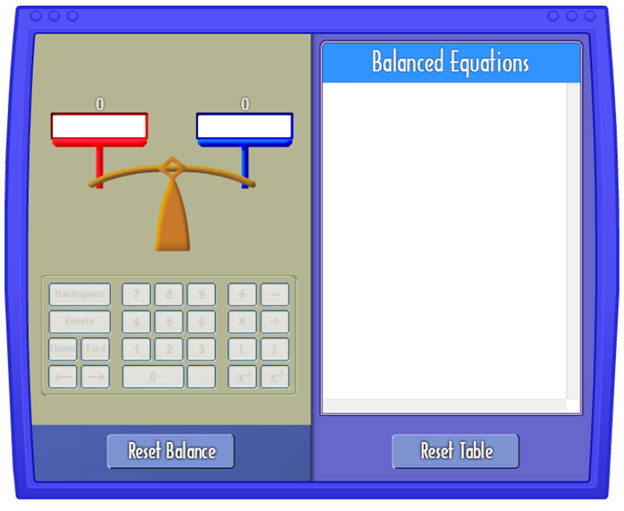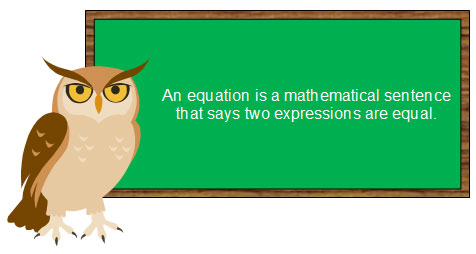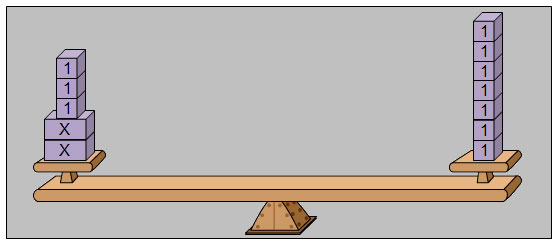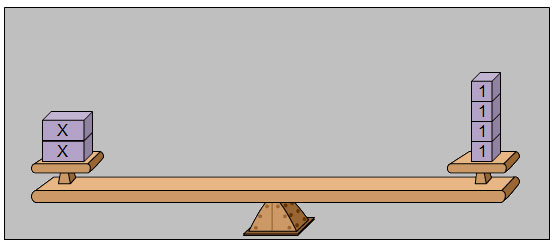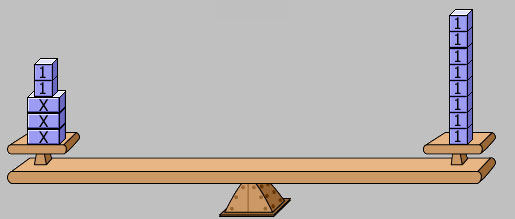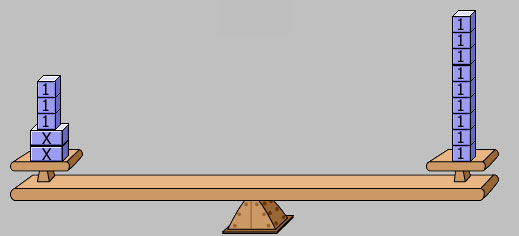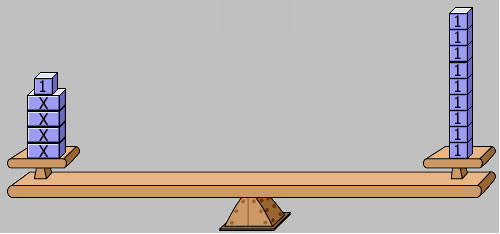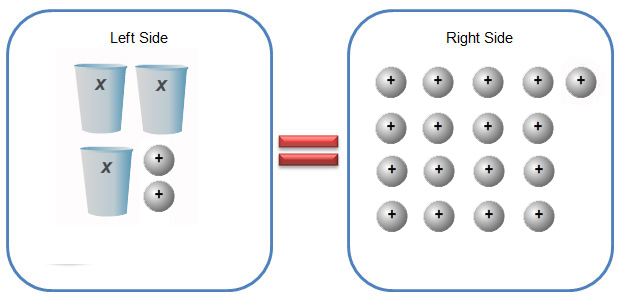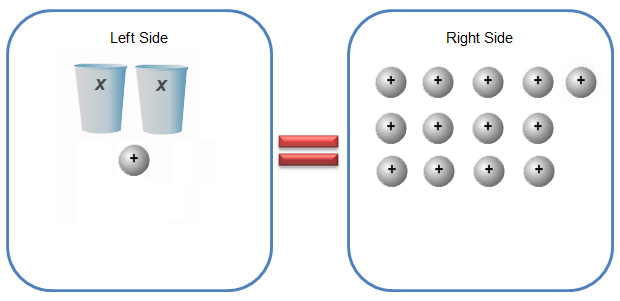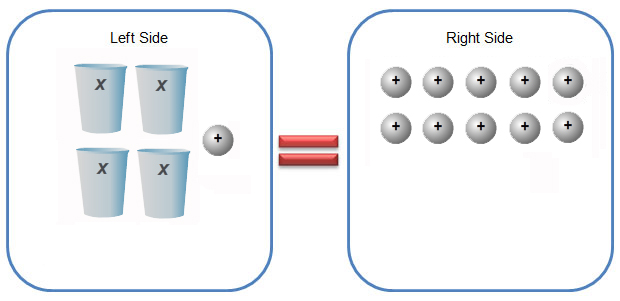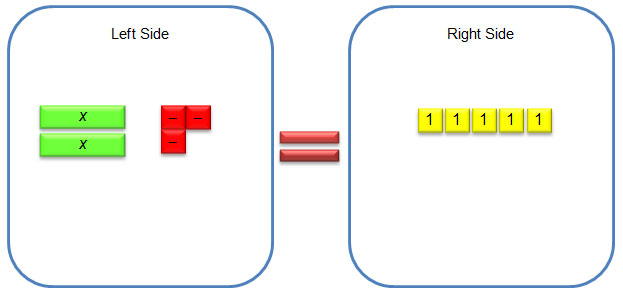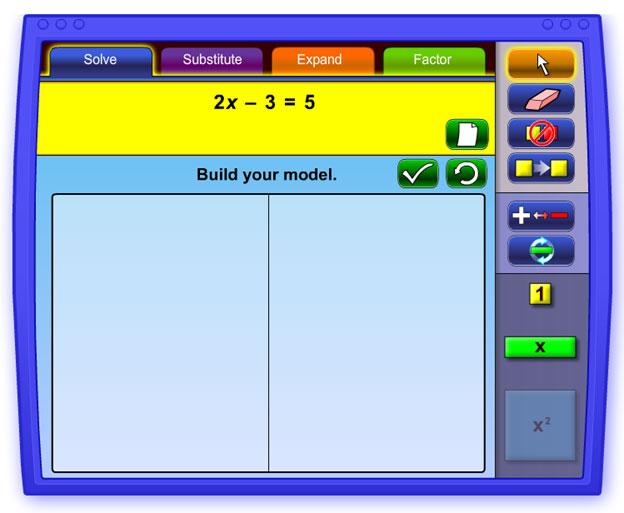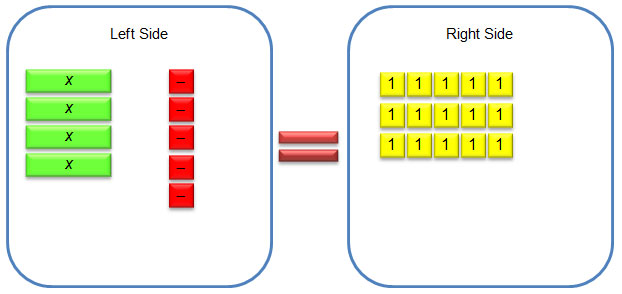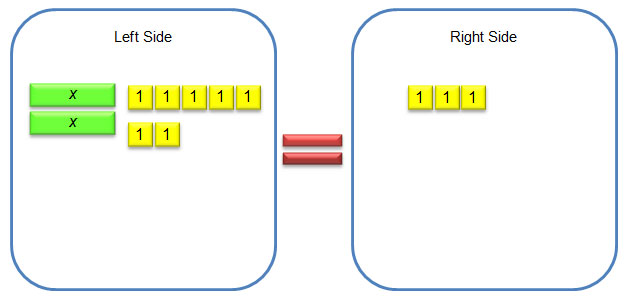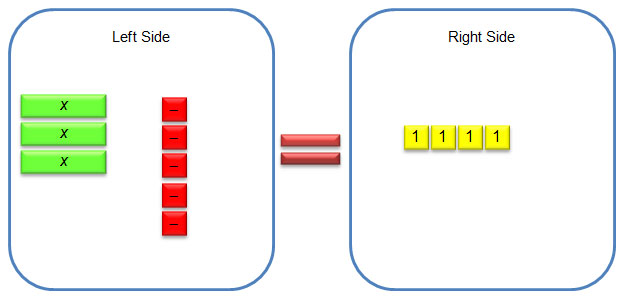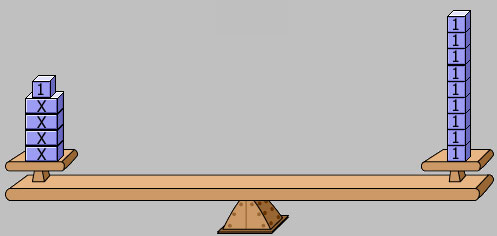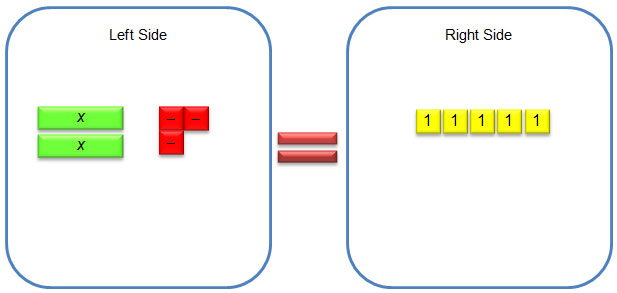As you have seen in previous grades, an expression is a mathematical statement that uses numbers, variables, and operations to show a relationship between certain quantities.
These are all examples of expressions that you may have seen.

If two expressions are equal, then the resulting mathematical sentence is an equation. These are examples of equations that you may have seen.

Because the two expressions on each side of the equation are equal, you will see the metaphor of a balanced scale used to represent the two sides of the equation.
For example, the equation 5 = 3 + 2 is shown in the image below using a balanced scale.
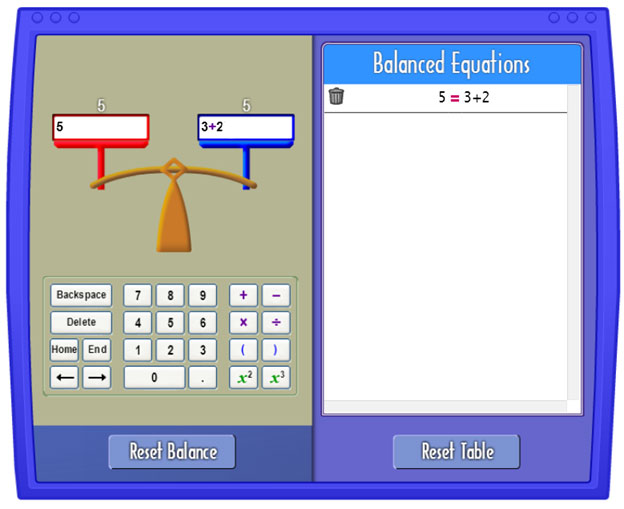
Use the interactive linked to the image below to explore the relationship between the following pairs of expressions. The interactive will open in a new browser tab or window. If the scale is balanced, then the expressions are equal, and you can write an equation to represent the relationship between the two expressions. If the scale is not balanced, then the expressions are not equal.
- 3(4) and 24 ÷ 2
- 3(8 − 3) and 13 + 2
- 27 ÷ 3 and 3 × 3
Now that you’ve investigated the idea of balance as it relates to numerical expressions, in this lesson, you will extend that idea to algebraic equations. You will use a variety of models to represent and solve algebraic equations, which involve relationships between numbers and variables.

